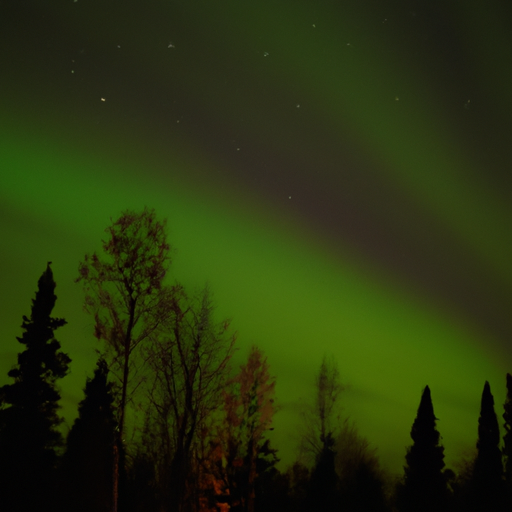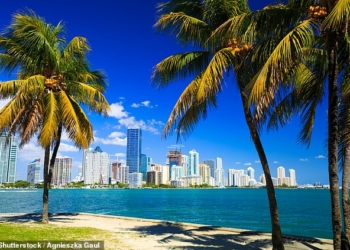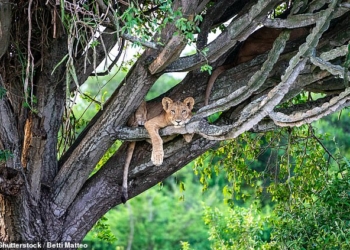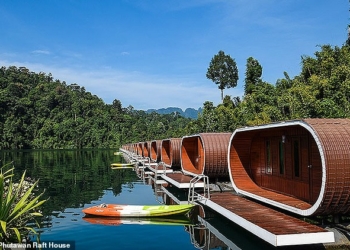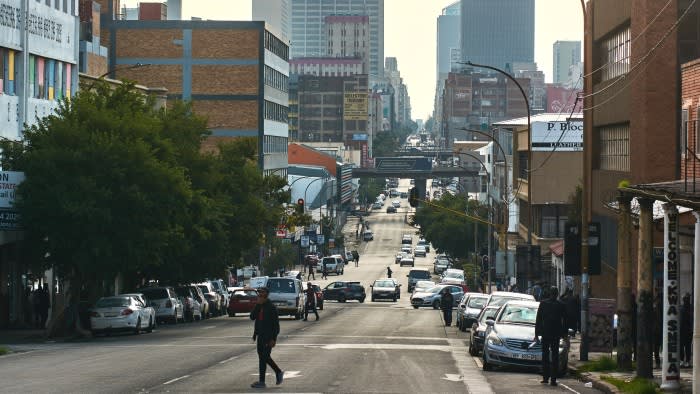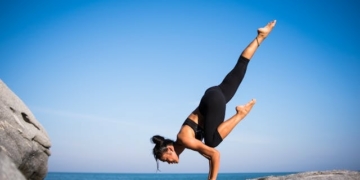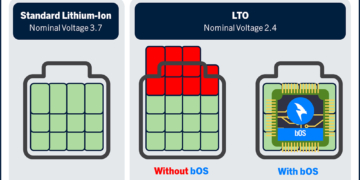-
Table of Contents
- Introduction
- How to Find the Best Northern Lights Tours
- The Science Behind the Northern Lights
- How to Photograph the Northern Lights
- The Best Time of Day to See the Northern Lights
- How to Prepare for a Northern Lights Viewing Trip
- The Best Places to See the Northern Lights
- How to Maximize Your Chances of Seeing the Northern Lights
- The Best Time of Year to See the Northern Lights
- Conclusion
“Experience the Magic of the Northern Lights – Best Viewed at Night!”
Introduction
The Northern Lights, also known as the Aurora Borealis, is one of the most spectacular natural phenomena in the world. It is a beautiful display of colorful lights that dance across the night sky in the Arctic regions. The best time to see the Northern Lights is during the winter months, when the nights are long and dark. The Northern Lights can be seen in many countries, including Norway, Sweden, Finland, Iceland, Canada, and Alaska. The best time to see the Northern Lights is usually between late August and early April, when the nights are long and dark. The Northern Lights can be seen in many different colors, including green, pink, purple, and blue. The best way to experience the Northern Lights is to travel to a location where the sky is dark and clear.
How to Find the Best Northern Lights Tours
The Northern Lights, also known as the Aurora Borealis, are a spectacular natural phenomenon that can be seen in the night sky in certain parts of the world. For many, seeing the Northern Lights is a once-in-a-lifetime experience, and it is important to make sure that you find the best tour to ensure that you get the most out of your experience. Here are some tips for finding the best Northern Lights tours.
First, research the different tour companies that offer Northern Lights tours. Look for reviews from past customers to get an idea of the quality of the tour and the level of customer service. Make sure that the tour company is reputable and has a good safety record.
Second, consider the type of tour that you want to take. Some tours are more focused on the Northern Lights, while others may include other activities such as snowmobiling or dog sledding. Decide what type of experience you are looking for and find a tour that matches your needs.
Third, consider the location of the tour. The Northern Lights can be seen in many different parts of the world, so make sure that you choose a tour that is in an area where the lights are likely to be visible.
Fourth, consider the length of the tour. Some tours are just a few hours long, while others can last for days. Choose a tour that fits your schedule and budget.
Finally, consider the cost of the tour. Prices can vary greatly depending on the type of tour and the length of the tour. Make sure that you compare prices to get the best deal.
By following these tips, you can find the best Northern Lights tours and ensure that you get the most out of your experience. With the right tour, you can have a once-in-a-lifetime experience that you will never forget.
The Science Behind the Northern Lights
The Northern Lights, also known as the Aurora Borealis, are a spectacular natural phenomenon that can be seen in the night sky in the northern hemisphere. This phenomenon is caused by the interaction of charged particles from the sun with the Earth’s atmosphere.
When the sun releases a stream of charged particles, known as the solar wind, they travel through space and eventually reach the Earth’s atmosphere. When these particles interact with the Earth’s magnetic field, they are drawn towards the poles. As they enter the atmosphere, they collide with gas particles, such as oxygen and nitrogen. This collision causes the particles to become excited and release energy in the form of light. The different colors of the Northern Lights are caused by the type of gas particles that are being excited. For example, oxygen produces a greenish-yellow light, while nitrogen produces a blue or purple light.
The Northern Lights are most commonly seen in the Arctic regions, such as Alaska, Canada, Greenland, Iceland, Norway, and Sweden. However, they can also be seen in other parts of the world, such as Scotland, Finland, and Russia. The best time to view the Northern Lights is during the winter months, when the nights are longer and the sky is darker.
The Northern Lights are a truly awe-inspiring sight, and their beauty has captivated people for centuries. Thanks to advances in science, we now understand the science behind this phenomenon and can appreciate it even more.
How to Photograph the Northern Lights
Capturing the beauty of the Northern Lights is a dream for many photographers. The Northern Lights, also known as the Aurora Borealis, are a spectacular natural phenomenon that can be seen in the night sky in the northern hemisphere. With the right equipment and knowledge, you can take stunning photographs of the Northern Lights.
First, you need to find a location with a clear view of the night sky. The Northern Lights are most visible in areas with low light pollution, such as rural areas or national parks. You should also check the Aurora forecast to determine when the Northern Lights will be most visible in your area.
Once you have chosen a location, you will need to prepare your camera. Set your camera to manual mode and use a wide-angle lens with a focal length of at least 24mm. Set your ISO to 800 and your shutter speed to 15-20 seconds. You may need to experiment with different settings to get the best results.
When you are ready to take the photograph, use a tripod to keep your camera steady. You should also use a remote shutter release or the self-timer to avoid camera shake. If you are shooting in a dark area, use a flashlight to illuminate the foreground of your image.
Finally, be patient and wait for the Northern Lights to appear. The Northern Lights can be unpredictable, so you may need to wait for a while before you get the perfect shot.
With the right equipment and knowledge, you can take stunning photographs of the Northern Lights. With patience and practice, you can capture the beauty of this natural phenomenon and create beautiful images that will last a lifetime.
The Best Time of Day to See the Northern Lights
The Northern Lights, also known as the Aurora Borealis, are a spectacular natural phenomenon that can be seen in the night sky in certain parts of the world. While the Northern Lights can be seen at any time of day, the best time to view them is typically between 10 pm and 2 am.
At this time of night, the sky is dark and the lights of the city are dimmed, allowing for optimal viewing conditions. Additionally, the Northern Lights are most visible during the winter months, when the nights are longer and the sky is darker.
When viewing the Northern Lights, it is important to be in a dark area away from light pollution. The best places to view the Northern Lights are typically in rural areas, away from the lights of the city. Additionally, it is important to dress warmly and be prepared for cold temperatures.
The Northern Lights are a beautiful and awe-inspiring sight, and the best time to view them is typically between 10 pm and 2 am. To ensure the best viewing experience, it is important to be in a dark area away from light pollution and to dress warmly. With the right conditions, you can experience the beauty of the Northern Lights in all their glory.
How to Prepare for a Northern Lights Viewing Trip
Preparing for a northern lights viewing trip can be an exciting and rewarding experience. To ensure that you have the best possible experience, it is important to plan ahead and be prepared for the journey. Here are some tips to help you get ready for your trip.
1. Research the best time and place to view the northern lights. The northern lights are most visible during the winter months, when the nights are longer and the sky is darker. The best places to view the northern lights are usually away from light pollution, such as in rural areas or national parks.
2. Pack the right clothing and equipment. Make sure to bring warm clothing, such as a coat, hat, gloves, and boots. You may also want to bring a tripod and camera to capture the beautiful display of the northern lights.
3. Check the weather forecast. The northern lights are best seen on clear nights, so it is important to check the weather forecast before you go.
4. Bring snacks and drinks. Make sure to bring snacks and drinks to keep you warm and energized during your viewing session.
5. Have a backup plan. If the weather does not cooperate, have a backup plan in place. Consider visiting a local museum or other indoor activity to make the most of your trip.
By following these tips, you can ensure that you have the best possible experience when viewing the northern lights. With a little bit of preparation, you can make the most of your trip and create memories that will last a lifetime.
The Best Places to See the Northern Lights
The Northern Lights, also known as the Aurora Borealis, are a spectacular natural phenomenon that can be seen in the night sky in certain parts of the world. The lights are created when electrically charged particles from the sun enter the Earth’s atmosphere and collide with gases such as oxygen and nitrogen. The result is a beautiful display of colors that can range from a faint green to a deep red.
For those looking to witness this incredible sight, there are several places around the world that offer the best chances of seeing the Northern Lights.
1. Norway: Norway is one of the best places to see the Northern Lights due to its high latitude and clear skies. The best time to visit is between October and March, when the nights are long and dark. The most popular viewing spots are the Lofoten Islands, Tromsø, and the Lyngen Alps.
2. Iceland: Iceland is another great destination for viewing the Northern Lights. The country’s high latitude and dark skies make it an ideal spot for aurora-spotting. The best time to visit is between September and April. Popular viewing spots include Reykjavik, the Westfjords, and the Snæfellsnes Peninsula.
3. Finland: Finland is another great destination for viewing the Northern Lights. The country’s high latitude and dark skies make it an ideal spot for aurora-spotting. The best time to visit is between September and April. Popular viewing spots include Lapland, Rovaniemi, and the Kakslauttanen Arctic Resort.
4. Sweden: Sweden is another great destination for viewing the Northern Lights. The country’s high latitude and dark skies make it an ideal spot for aurora-spotting. The best time to visit is between September and April. Popular viewing spots include Abisko National Park, Jukkasjärvi, and the Icehotel.
5. Alaska: Alaska is the best place in the United States to view the Northern Lights. The best time to visit is between September and April. Popular viewing spots include Fairbanks, Denali National Park, and the Chena Hot Springs Resort.
No matter where you choose to view the Northern Lights, it is sure to be an unforgettable experience. With a bit of luck and clear skies, you will be able to witness one of nature’s most beautiful displays.
How to Maximize Your Chances of Seeing the Northern Lights
The Northern Lights, also known as the Aurora Borealis, are a spectacular natural phenomenon that can be seen in the night sky in certain parts of the world. If you are lucky enough to witness this incredible sight, it can be an unforgettable experience. To maximize your chances of seeing the Northern Lights, there are a few steps you can take.
First, you need to find a location with a high probability of seeing the Northern Lights. The best places to view the Aurora Borealis are in the northernmost parts of the world, such as Alaska, Canada, Iceland, Norway, Sweden, and Finland. These areas are known as the “Aurora Zone” and have the highest chances of seeing the Northern Lights.
Second, you need to plan your trip for the right time of year. The Northern Lights are most visible during the winter months, from September to March. During this time, the nights are longer and the sky is darker, making it easier to spot the Aurora Borealis.
Third, you need to check the weather forecast. The Northern Lights are best seen on clear, dark nights with little to no cloud cover. If the forecast is predicting cloudy skies, you may want to postpone your trip until the weather clears up.
Fourth, you need to find a spot with minimal light pollution. The Northern Lights are best seen in areas with little to no artificial light. If you are in a city, try to find a spot away from the city lights.
Finally, you need to be patient. The Northern Lights can be unpredictable and may not appear even if all the conditions are perfect. If you don’t see them the first night, don’t give up. Keep trying and you may eventually be rewarded with a spectacular show.
By following these steps, you can maximize your chances of seeing the Northern Lights. With a bit of luck and patience, you may be able to witness this incredible natural phenomenon.
The Best Time of Year to See the Northern Lights
The Northern Lights, also known as the Aurora Borealis, are a spectacular natural phenomenon that can be seen in the night sky in the northern hemisphere. The best time of year to see the Northern Lights is during the winter months, from late September to late March.
The Northern Lights are caused by solar particles entering the Earth’s atmosphere and colliding with oxygen and nitrogen atoms. This creates a beautiful display of light in the night sky, usually in shades of green, pink, and purple.
The best time to see the Northern Lights is when the sky is dark and clear. This usually occurs during the winter months, when the days are shorter and the nights are longer. The Northern Lights are most visible in the northernmost parts of the world, such as Alaska, Canada, Iceland, Norway, and Sweden.
In order to maximize your chances of seeing the Northern Lights, it is important to plan your trip for a time when the sky is dark and clear. The best time to see the Northern Lights is usually between 10 pm and 2 am, when the sky is at its darkest.
It is also important to check the Aurora forecast before you plan your trip. The Aurora forecast is a tool that predicts the intensity of the Northern Lights on a given night. The forecast is based on solar activity and can help you plan your trip accordingly.
The Northern Lights are a breathtaking natural phenomenon that can be seen in the night sky during the winter months. To maximize your chances of seeing the Northern Lights, it is important to plan your trip for a time when the sky is dark and clear, and to check the Aurora forecast before you go. With a bit of luck and some careful planning, you can experience the beauty of the Northern Lights for yourself.
Conclusion
The best time to see the Northern Lights is during the winter months, when the nights are longer and the sky is darker. The Northern Lights are most visible in the northern hemisphere, so the further north you go, the better your chances of seeing them. The best time to view the Northern Lights is usually between late August and early April, when the nights are longest and the sky is darkest. However, the Northern Lights can be seen at any time of the year, so it is always worth checking the forecast and trying your luck. 3 Best Places to Live in the East Coast 2023
